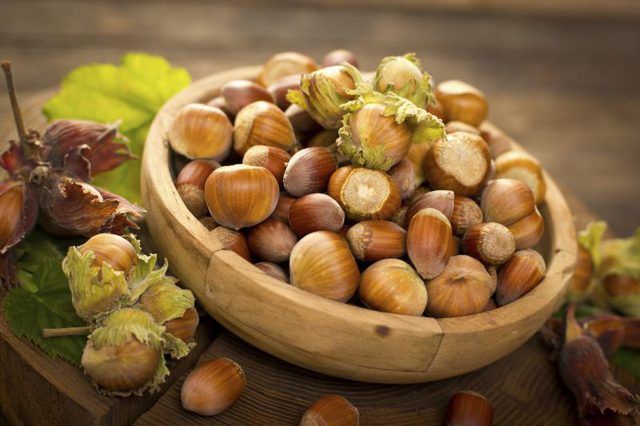Bulbs
Flower Basics
Flower Beds & Specialty Gardens
Flower Garden
Garden Furniture
Garden Gnomes
Garden Seeds
Garden Sheds
Garden Statues
Garden Tools & Supplies
Gardening Basics
Green & Organic
Groundcovers & Vines
Growing Annuals
Growing Basil
Growing Beans
Growing Berries
Growing Blueberries
Growing Cactus
Growing Corn
Growing Cotton
Growing Edibles
Growing Flowers
Growing Garlic
Growing Grapes
Growing Grass
Growing Herbs
Growing Jasmine
Growing Mint
Growing Mushrooms
Orchids
Growing Peanuts
Growing Perennials
Growing Plants
Growing Rosemary
Growing Roses
Growing Strawberries
Growing Sunflowers
Growing Thyme
Growing Tomatoes
Growing Tulips
Growing Vegetables
Herb Basics
Herb Garden
Indoor Growing
Landscaping Basics
Landscaping Patios
Landscaping Plants
Landscaping Shrubs
Landscaping Trees
Landscaping Walks & Pathways
Lawn Basics
Lawn Maintenance
Lawn Mowers
Lawn Ornaments
Lawn Planting
Lawn Tools
Outdoor Growing
Overall Landscape Planning
Pests, Weeds & Problems
Plant Basics
Rock Garden
Rose Garden
Shrubs
Soil
Specialty Gardens
Trees
Vegetable Garden
Yard Maintenance
How to Grow Hazelnuts From a Seed
How to Grow Hazelnuts From a Seed. Deciduous shrubs sometimes trained into tree shapes, hazelnuts (*Corylus spp.*) generally grow from 12 to 20 feet tall in U.S. Department of Agriculture plant hardiness zones 4 through 8, with 2- to 5-inch oval leaves and 1- to 3-inch brown catkins in late winter. Catkins are the male flowers, the female ones...

Deciduous shrubs sometimes trained into tree shapes, hazelnuts (Corylus spp.) generally grow from 12 to 20 feet tall in U.S. Department of Agriculture plant hardiness zones 4 through 8, with 2- to 5-inch oval leaves and 1- to 3-inch brown catkins in late winter. Catkins are the male flowers, the female ones being inconspicuous buds brightened with red stigmas and styles. The American hazelnut (Corylus americana) makes 1/2-inch diameter nuts and the European type (Corylus avellana) slightly larger 3/4-inch ones. Those nuts require cold stratification (a season spent in chilly, damp soil) to germinate.
Gather Nuts
Corylus cultivars don't come true from seed, so don't expect the nuts produced by your seedlings to look exactly the same as the nuts you planted. Supermarket hazelnuts probably will have been dried before sale, which can send them into deeper dormancy. For the best results, therefore, harvest nuts you wish to use as seeds from a shrub in the neighborhood.
Gather them in late summer or early autumn when both the shells and husks have turned only partially brown. Store them in a tightly closed glass jar in the refrigerator until late autumn. At that point you will need to decide whether you wish to plant the nuts with their shells or without them, and whether you prefer to stratify them indoors or outdoors.
Soak Nuts
If you decide to remove the shells, be careful not to harm the kernels in the process. For the best germination, soak kernels for 24 hours in a gibberellic acid (GA-3) solution of about 50 parts per million before sowing them. To create such a solution, mix 10 milligrams of GA-3 powder into 1 cup of distilled water and allow the water to sit overnight until the powder dissolves.
Should you decide to leave the shells on the nuts, soak the nuts for two to four days before planting them. In either case, discard nuts and kernels that donít sink in water as they probably arenít viable.
Stratify Nuts
To start indoor stratification after the soaking, drop a couple handfuls of a moist mix -- composed of 1 part peat moss and 1 part sand -- into a zipper-type plastic bag. Add the still-damp nuts or kernels and shake the bag until they settle into the mix. Zip the bag shut, and place it in the refrigerator for three months.
If you wish to plant hazelnuts in the ground outdoors instead, choose a location with moist but well-drained loam in full sun. Sow the nuts or kernels 1 inch deep after their soaking, water the soil well and mulch it with 1 to 1 1/2 inches of sawdust. Cover the planting area with hardware cloth or another protective barrier to prevent rodents from digging up the nuts.
Nurture Seedlings
When the three months are up, remove the bag from the refrigerator and place it on a high, warm shelf with a temperature near 70 degrees Fahrenheit. After five days have passed, check the nuts or kernels for signs of germination.
Pot up any that show new roots, placing them in individual tree pots at least 8 inches deep and filled with potting soil. Plant each nut or kernel with its roots down, about 1 inch deep in the soil. Position the pots under a grow light or on a sunny windowsill, keeping their soil moist. Return the nonrooted nuts or kernels to the refrigerator for another month.
After the young shrubs sprout, they will be fed by their kernels for their first year and shouldn't require additional fertilization. Seeds sown in the ground outdoors should germinate after the weather warms in spring. If that season is dry, water the seedlings as often as necessary to keep their soil damp. When they stand 10 inches tall, transplant them to stand 15 to 20 feet apart. For proper pollination, you need at least two.